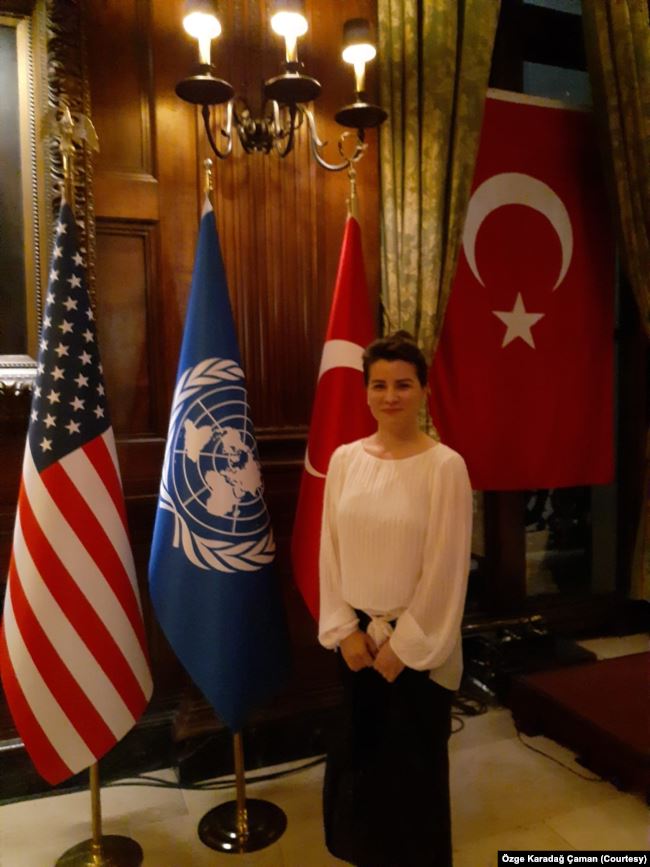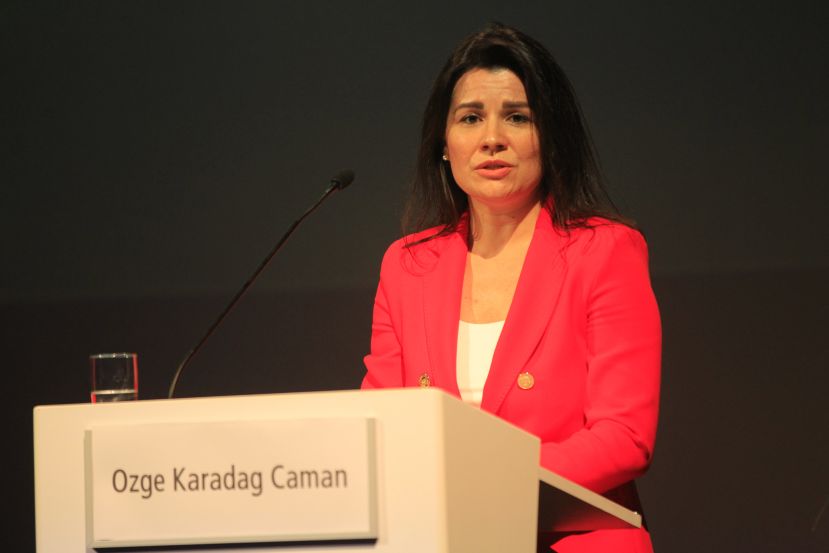Dr. Özge Karadağ Caman from Columbia University: COVID-19 cases in the U.S. are still worrisome.
I had a discussion with Dr. Özge Karadağ Caman from Columbia University, which is one of the best universities in the U.S. with leading research in the medical field. She is a public health researcher at the Center for Sustainable Development and a member of the Lancet COVID-19 commission. She is also one of the members of the Turkish-American Medical Association. The success of Turkish doctors and the higher positions that they hold make us proud. I want to share with you some special sections from my conversation with her:
There isn’t any decrease in COVID-19 cases and mortality. What is the situation in hospitals? How do you think the winter will be like?
The worrisome trend in the COVID-19 numbers in the U.S. still continues. New York and some other nearby states are relatively better as compared to the first phases of the pandemic, thanks to the local precautions they have taken; however, it is unfortunately not possible to mention a centralized, powerful pandemic response across the U.S. Our decisions and actions rather than the virus itself determine the progress of the pandemic, and we can see that the pandemic can be kept under control in countries that acknowledge this scientific fact, show political decisiveness, and take the required public precautions; however, the U.S. is, unfortunately, yet to maintain country-wide control due to political, economic, cultural, and many other reasons. In some states where the number of cases is high, there are cases of overcrowding in hospitals and delays in non-emergent and non-COVID-19 medical care. Recently, studies on the severity and extent of the impact on non-COVID-19 healthcare services during the pandemic have gained prominence. Given the high number of COVID-19 cases, there are delays not only in protective services but also in the diagnosis and treatment of several other diseases at places where there is a negative impact both on the provision of and request for healthcare services. Conducted research will show the gravity of the situation more clearly in the upcoming period. If there are to be no changes in national policies and adopted measures, difficult autumn and winter seasons await the U.S.; however, the states which solemnly implement their own local measures will go through the following months with less damage.
It is said that the vaccine will be ready in 1 to 2 months. When do you think the vaccine will be available for use?
We see several remarks saying that the vaccine will be ready for the U.S. The approval procedures, which normally take longer, are anticipated to take shorter this time so that the vaccine can be used promptly during the pandemic. This issue should be addressed with a multidimensional and multidisciplinary approach because the development process of the vaccine should be completed with an appropriate number of subjects within a determined period, which must not be hindered to develop a vaccine as soon as possible to be able to provide protection for people. The most important principle taught in medical school is, “First, do no harm.” Accordingly, it is expected for the vaccine to be sufficiently tested to ensure that there are no rare, unwanted side effects while being protective at the same time and that the vaccinated subjects will be monitored during a specific period of time. Furthermore, even if the vaccine is released, herd immunity may not be achieved in a short period of time. The time required to produce millions of doses, the organization required for redundant and fair distribution thereafter, the provision of vulnerable groups with access to the vaccine, and the groups under the impression of anti-vaccinationists constitute the issues to be considered.

There are surely several areas in the national healthcare system of each country that may be improved; however, it is possible to claim that the healthcare system in Turkey has several positive aspects when compared with the healthcare system in the U.S. When we evaluate the health insurance system and provision of healthcare services in the U.S., which has better facilities in the field of health with regard to scientific research and product development, we know that there is a high level of privatization in the provision of services, the health insurance system is complex, healthcare services are expensive, and there are serious issues and inequalities regarding access to the services. Pandemics are controlled first within the society itself and then via primary care and community-oriented services and measures. The hospitals, named as secondary or tertiary care services, come into play during treatment of the cases that occur despite the communal measures adopted. In other words, they manage the pandemic from the background rather than on the front line. Despite the existence of numerous hospitals with high budgets, high technology, and qualified experts, one of the important reasons why case numbers and mortality of the pandemic are high in the U.S. is the issues in the public health system or, in other words, the problems faced on the front line in fighting the pandemic. However, I would like to highlight that the two countries have different aspects both open to improvement in terms of the system itself and also the response to the pandemic, as the public health system and the hospitals constitute only a fragment of the response to the pandemic; this, on the other hand, is a multi-dimensional struggle that covers economic, social, and cultural aspects.
How was the education of medical students affected in the COVID-19 period?
It is inevitable to assert that medical training also suffered from some inconveniences just as the other fields, but the pandemic has its lessons to be learned. In medical training, sessions in laboratories and bedside teaching are just as important as theoretical knowledge. However, due to the pandemic, these sessions, from time to time, are interrupted. On the other hand, the epidemic may have contributed to medical students and specialty candidates; they may learn by experiencing in real life some cases that are abstract when covered theoretically, which is likely to designate them as experienced professionals in their prospective careers.
I think that today’s medical students will better understand the importance of public and global health; that physical, mental, and social health is a whole; that there are social factors that affect public health; and that policies and media affect health.
Latest from Ali Cinar
- Merve Hickok, President of the Center for AI and Digital Policy, speaks on the latest developments in AI.
- Bloomberg HT U.S. Representative Ali Cinar interviews Julie Ediah, U.S. Consul General of Istanbul
- Integrated Polymer Industries Recognized by Northrop Grumman for Supplier Excellence
- Cuts to Social Work and Education Budgets in New York
- President Biden meets with Texas governor, officials in 1st visit to US-Mexico border










